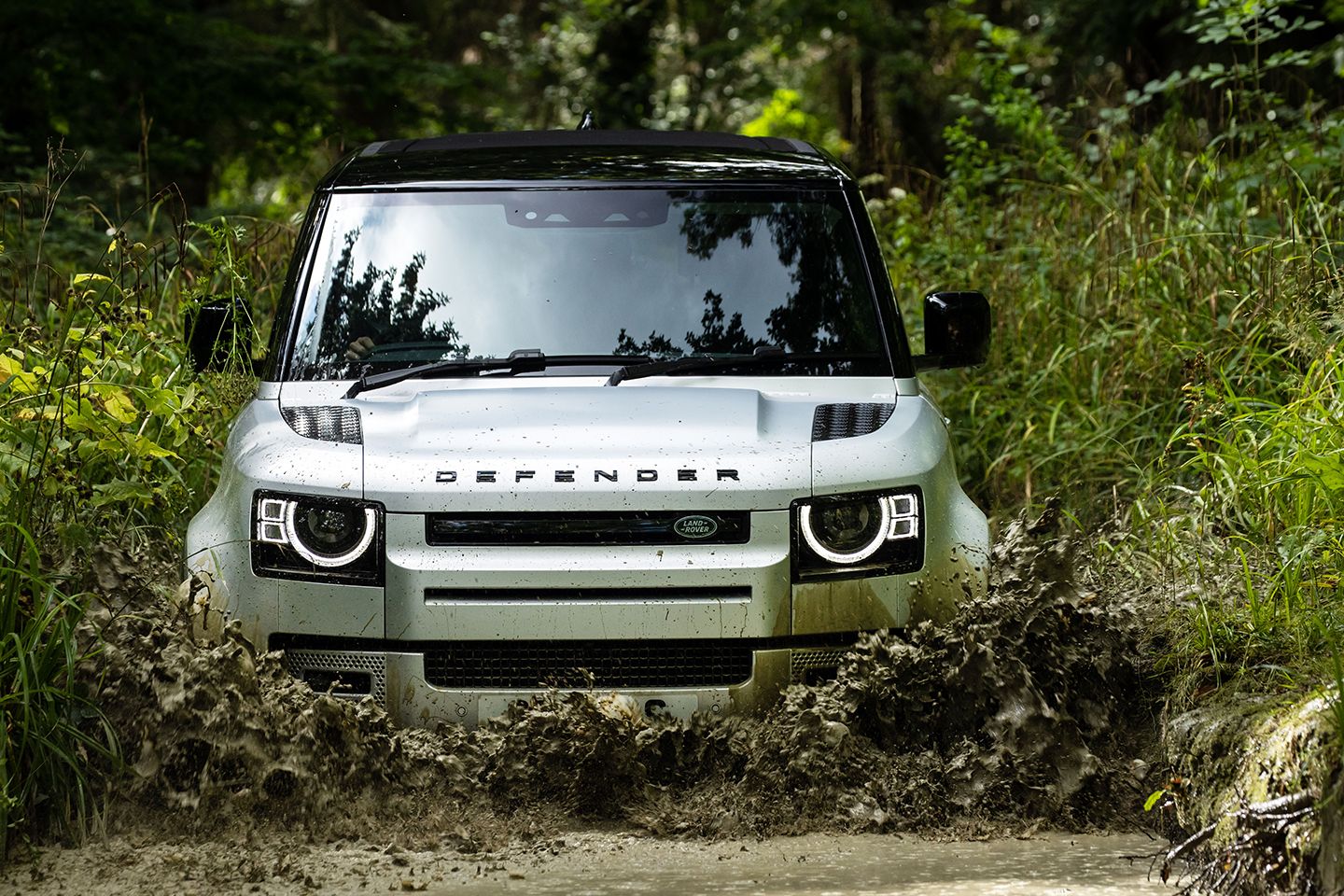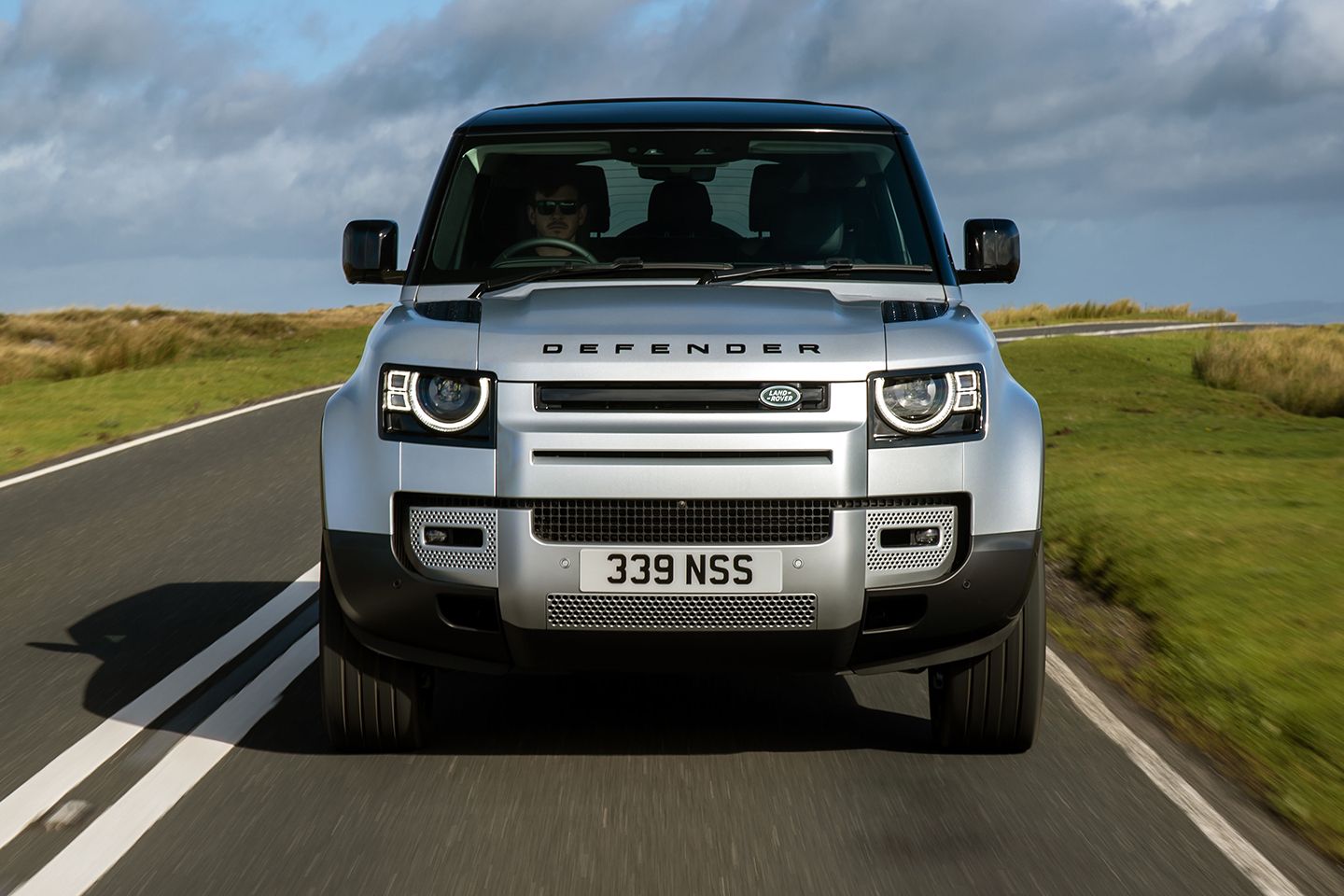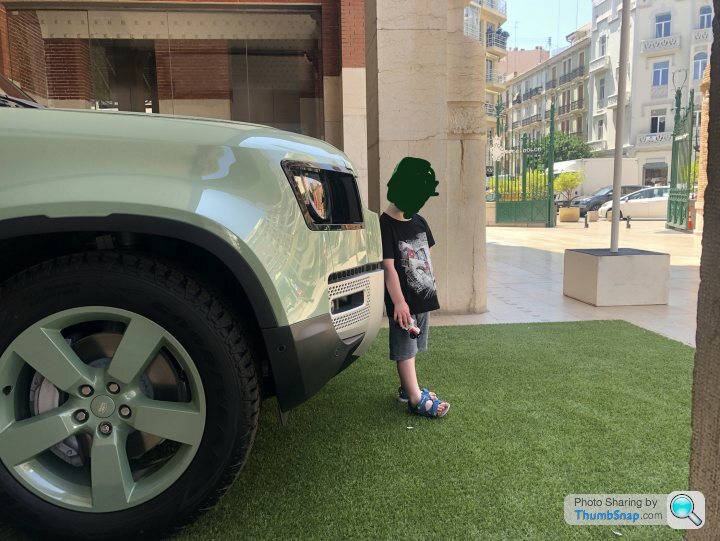Land Rover Defender (L663) | PH Used Buying Guide
The new Defender was a phenomenon at launch almost four years ago - how does it fare as a used prospect?
Key considerations
- Available for £45,000
- 3.0-litre inline-six turbo diesel, all-wheel drive
- More capable on any surface than you’ll ever be
- Well-thought-out and comfy cabin
- Still ‘on point’ after nearly four years
- Not the flawless LR we’ve always been hoping for
When is a Land Rover Defender not a Land Rover Defender? The answer to that, in the eyes of many traditionalists anyway, is when it’s the D7X aluminium-platformed unibody L663 rather than the body-on-frame ‘icon’ that LR sold under the same name from 1983 to 2016. And of course for an even longer time before that under other names, not all of them polite.
Despite or maybe even because of the old Defender’s chequered history, replacing it was always going to be a poisoned chalice for whoever happened to be in charge of Land Rover at the time. The process of making that transition from historic to modern looked like the hottest of hot potatoes, one fraught with reputational and commercial danger.
LR’s ace in the hole was the knowledge that, thanks to the huge technical jumps made since the original Land Rover first jolted its first owners’ spines and loosened their fillings back in the late '40s, the replacement was bound to be a quantum leap on the old Defender, crucially not just off the road but also on it.
To try and ease the switch from old to new, and also because it made sense, many of the old Defender’s core features were included in the L663’s design brief. Outside, that meant short overhangs and an upright stance along with other visual connectors to the old Defender like Alpine windows, a side-hinged tailgate and an outside spare wheel. In the cabin, structural elements that would normally be hidden were exposed to create a pared-back, functional vibe, but not at the expense of luxury, practicality or the all-important connectivity, provided here by JLR’s then-new Pivi Pro 10-inch touchscreen infotainment system with the world’s first dual-eSIM. You’ll have to ask a young person what that is. Your less sprightly writer could be wrong here but he thinks it means you could have Android Auto and Apple CarPlay running at the same time.

While we’re on this sort of thing, now is surely the time to tell you that the Defender was the first Land Rover to include a domain controller that consolidated a number of Advanced Driver Assistance Systems (ADAS) and driver convenience functions built on top of the QNX Hypervisor, which as you may know was the first ASIL D-certified QNX Hypervisor. Fascinating stuff. Anyway, the L663 Defender was announced in September 2019, with the five-door, 5-, 6- or 5+2-seat 110 going on sale first in 2020 followed shortly after by the three-door 90 with up to six seats. Hard Top commercial versions could be had from mid-2021.
The full-size eight-seat 130 didn’t join the range until the second half of 2022, following its announcement in May of that year, at prices starting from just under £74,000. The 130 came with new colour and trim choices inside and out, and three ‘carefully curated’ (ugh) First Edition models in either Fuji White with an extended bright pack, light oyster leather and natural light oak veneers, Sedona Red with black leather and smoked oak, or Carpathian Grey with vintage tan leather and ‘rough-cut’ (should save on warranty claims) walnut.
We’d like to tell you more about the Noble Chrome, the Ceres Silver detailing, the eight trim specs and the four accessory packs (Explorer, Adventure, Urban and Country) that could all be part of the new Defender experience but we don’t want to break the internet. Suffice it to say that, in the manner of the Mini, an owner would do well to find another L663 exactly like the one they’d bought.
A refresh for ’24MY Defenders was announced in September 2023 which standardised some stuff that had previously been optional. Again the internet comes up with many different views on this but we think that that list included adaptive cruise, a sliding fabric roof and a heated steering wheel with electric adjustment. We also think that it added improved headlights, a bigger infotainment screen, a new digital instrument display and premium audio.
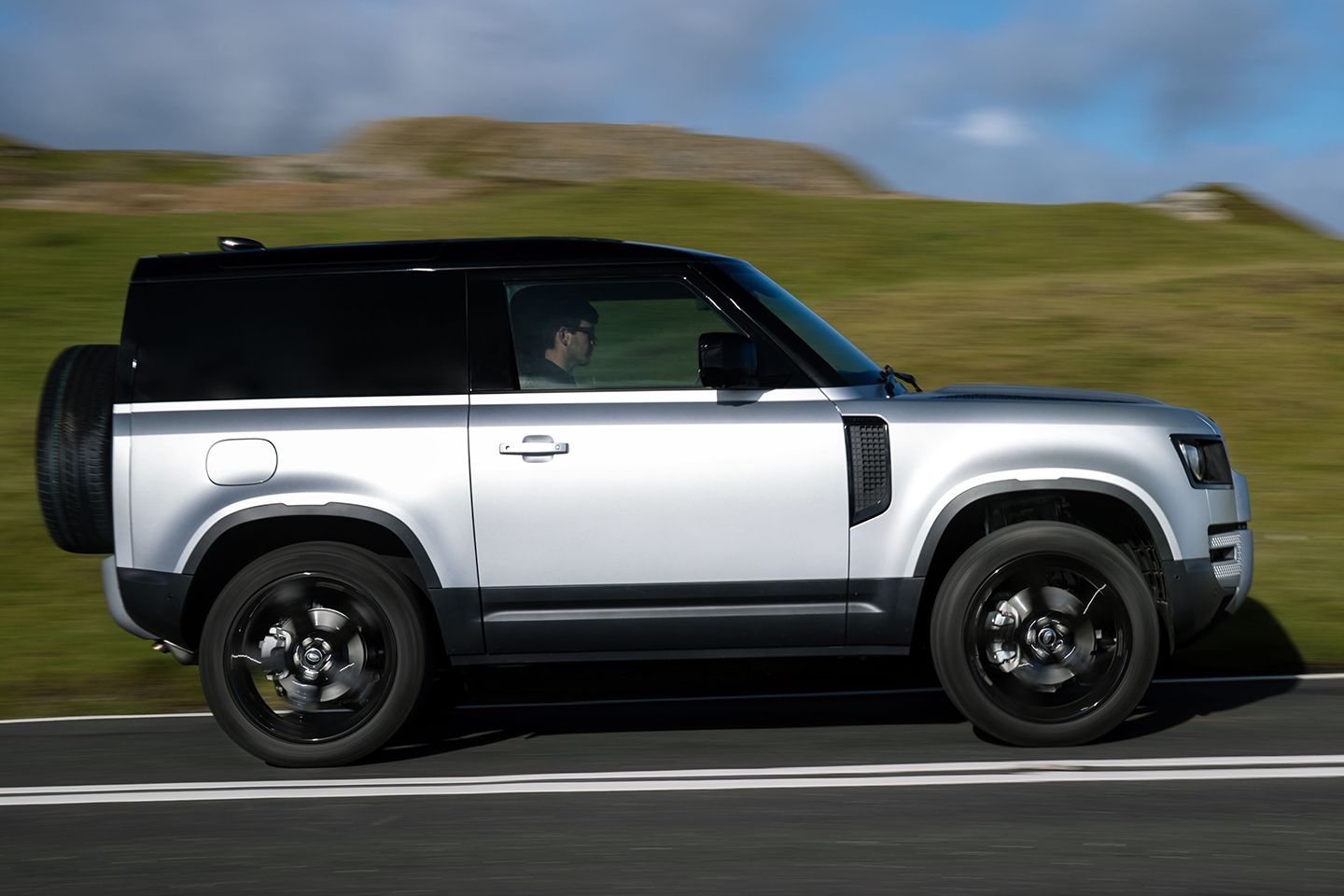
An Outbound version was revealed at this time, too. This had a new seat configuration with a wide gap between the two rear seats to accommodate a bonkers amount of cargo. The Outbound’s starting price for the D300 130 version was around £80k. D300s in 110 length and SE spec began at just under £62,000.
The models we’re going to concentrate on here are those with mild hybrid 3.0 litre inline-six turbo diesel engines. There were three choices, the D200 with 200hp, the D250 (250hp), and the D300 (guess). In the UK, around fourteen 110-sized D300s were sold for every 110-sized D200, while the 110 D250 outnumbered the 110 D200 by around 25 to 1. The ratios were less stark on the 90 (four to one D250 vs D200, maybe two to one D300 vs D200) but as far as we can see there were no 130-series D200s at all and at the time of writing in early 2024 there were very few D200s of any size for sale in the UK, so we’re calling the D200 a minority choice and concentrating on the 250 and 300 in this guide. All had a ZF eight-speed automatic gearbox and a two-speed transfer case.
Whichever model you picked it seemed like you couldn’t lose because as soon as the first road tests came out it appeared that, not for the first time, Land Rover had an absolute winner on its hands. The new Defender was named World Car Design of the Year in 2021, the third such win for LR after the Velar in 2018 and the Evoque in 2012. It was also Women’s World Car of the Year in 2021 and it grabbed lots of other magazine awards around the world.
We know that Land Rover can build cars that are technically and emotionally appealing – but the big question of course is can they build cars that last? L663s are not made in the UK but in Slovakia, at a plant opened in late 2018. You’d like to think that the factory’s newness would reduce the reliability issues that seem to have affected, to a greater or lesser extent, just about every Land Rover ever built, but we’ll see if that’s been the case with the L663 as we move through this guide. The first L663s are three years old now. That should certainly be long enough to form a picture of the ownership proposition. Does the promise stack up against the reality?
SPECIFICATION | LAND ROVER DEFENDER 110 D300 (2020-on)
Engine: 2,996cc inline-six turbo diesel 24v
Transmission: 8-speed auto, all-wheel drive
Power (hp): 300@4,000rpm
Torque (lb ft): 479@1,500-2,500rpm
0-62mph (secs): 7.0
Top speed (mph): 119
Weight (kg): 2,361
MPG (official combined): 31-33.6
CO2 (g/km, WLTP): 228-245
On sale: 2020 - on
Price new: £61,955 (110 SE D300)
Price now: from £44,950 (D250/D300)
Note for reference: car weight and power data are hard to pin down with absolute certainty. For consistency, we use the same source for all our guides. We hope the data we use is right more often than it’s wrong. Our advice is to treat it as relative rather than definitive.
ENGINE & GEARBOX
Despite the considerable weight they were pushing, neither the D250 or the D300 diesel were found wanting for ‘get up and go’. The 479lb ft 300 – which was actually faster through the 0-62 than the four- or six-cylinder petrol equivalents – did everything the D250 did perfectly well, just with a little more ease.
In 130 guise the D300 would return cruising mpg figures in the low 30s, dropping to high 20s overall in mixed use, hardly spectacular and quite a bit worse than the mid-40s you might expect to get in an identically-engined Range Rover Sport. It was mainly down to the Defender’s extra weight and, more pertinently, its inferior aerodynamics which kept the D300 130’s top speed down to 119mph, compared to the D300-powered RRS’s 135mph. The Defender’s tank was bigger than the RRS’s though, so you could still expect to get at least 500 miles from a fill. A bit less of course if you were using the full braked towing capacity of up to 3,500kg (750kg unbraked).
When the L663 was launched Land Rover said that consolidating more systems onto fewer ECUs was integral to automotive electric design. We were all hoping that that wouldn’t translate into a recipe for electrical disaster. It’s a fact that faults in the electrical systems of complex, modern cars like this feature in just about every buying guide we do, and Land Rover has been at the forefront when it comes to offering cutting-edge electronics without necessarily providing the kind of backup you’d hope for from the dealer network when it goes wrong.
Faults, for example, like those with the BSIG (belt-integrated starter-generator, a mild-hybrid alternator substitute) which would throw a warning light. Further investigation would usually reveal that the 48v battery wasn’t charging. It should be said that these BSIG problems are not exclusive to LR. Audi has also struggled with them.
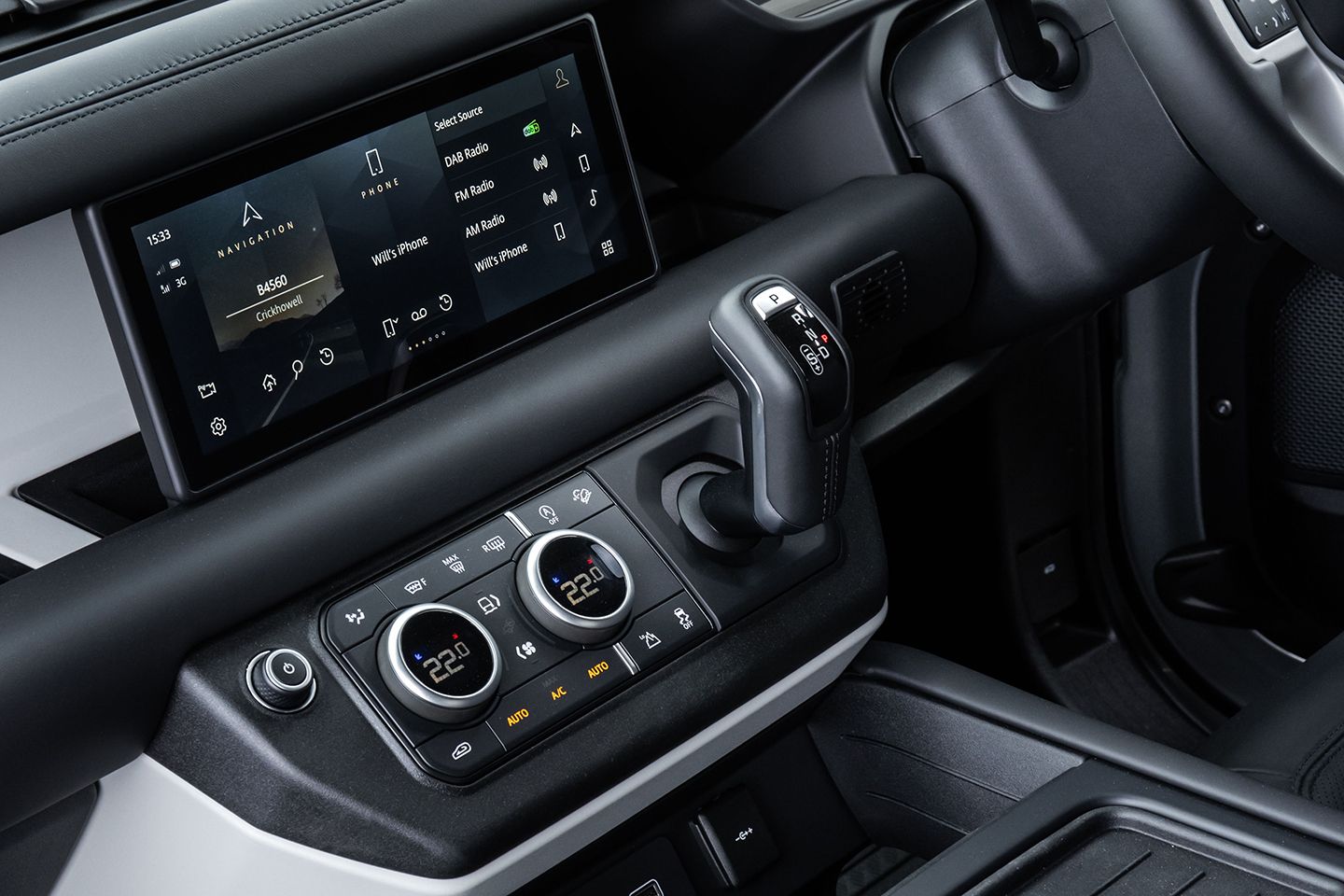
Mechanically the six-pot diesel Defenders have acquitted themselves pretty well but they haven’t been faultless. More than one owner has experienced injector failure. One high-mileage owner had two starter motor failures and a cracked intake manifold in just under 90,000 miles. They also went through three sets of front brake discs but they did say they were making use of the full towing capacity. Another apparently extremely unlucky Germany-based owner said he had had four instances of exhaust gas blowing into the cabin via a leakage at the DPF intake, a ‘clogged’ (and replaced) turbocharger, and three replacement intercoolers.
There has also been the odd gearbox control module issue which would allow you to select drive but then drop back into park when you tried to go anywhere. Many owners noted a jerkiness when re-applying throttle from a near-stop, and magazine road testers noticed a bum-clenching delay in the return of power when entering roundabouts. A recall was issued to change the airbox on the D sixes because the original part was rubbing on the radiator top hose. The EV battery was warrantied for six years or 62,000 miles.
Fixed-price servicing is available from the official network for the new Defender but no online costs are provided by LR. When we tried to ‘enquire’ on the website that function wasn’t working. On more than one specialist independent site the new Defender was conspicuous by its absence. The first service wasn’t supposed to happen until 21,000 miles or 24 months had elapsed. Some of the owners who felt uneasy about that and who wanted to do some sort of service at half that mileage/period were able to take advantage of cheap oil/filter service offers that LR was coincidentally doing at the time, cheap in this context being around £150.
Insurance costs are a hot topic with Land Rovers. It’s a mixed picture with the new Defender. Some owners have seen their renewals doubled, others have only had the sort hike that the rest of us have seen on non-LR vehicles, still others have been told they’ll qualify for a considerably lower premium if they put a sub-£50k value down for their Defender.
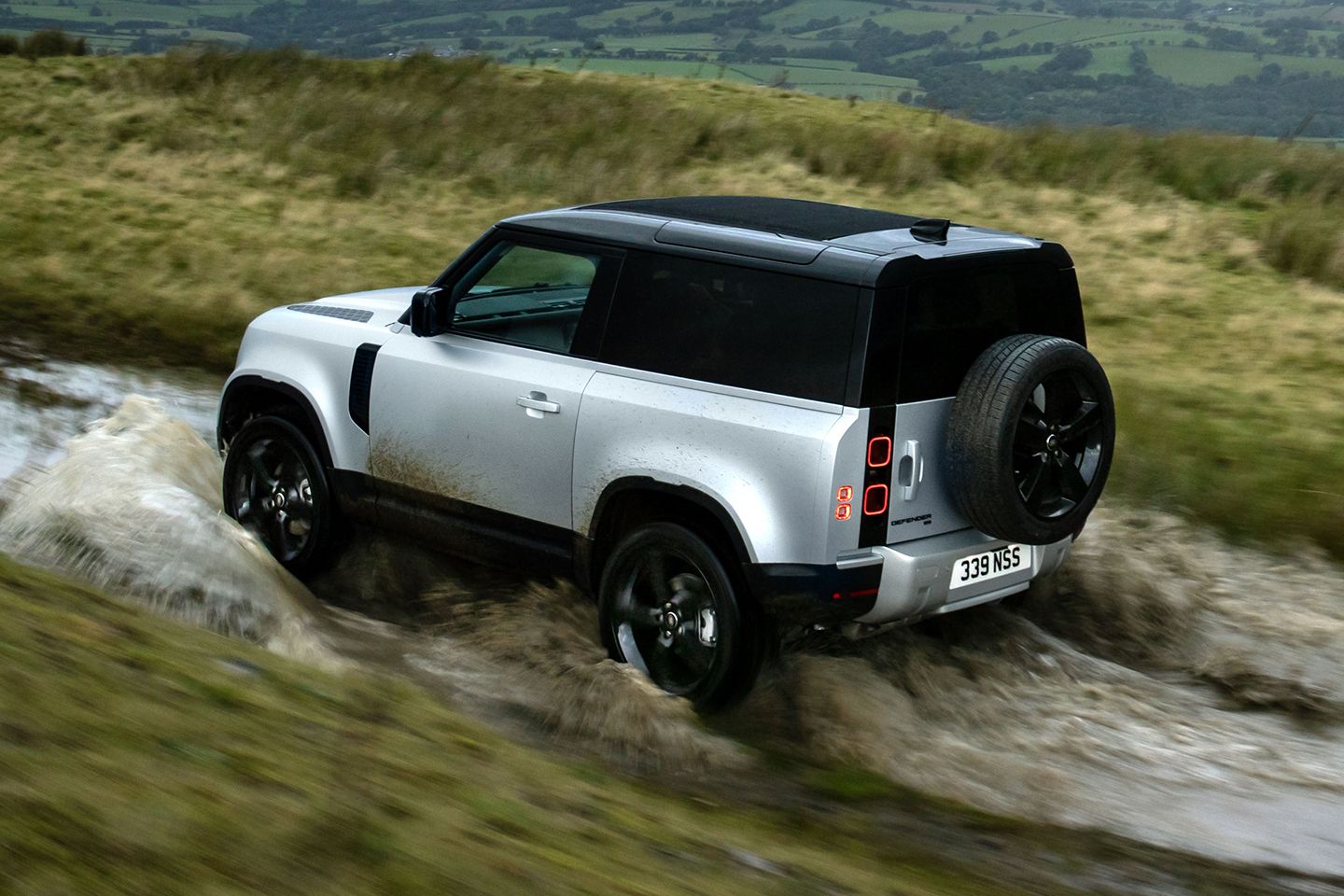
CHASSIS
The D7X body structure was the stiffest one ever to wear a Land Rover badge. Rammed with LR’s impressive and established range of all-terrain technologies, it delivered an extremely impressive dynamic performance on pretty much any surface.
The 90, as ever, was the most agile of the three available lengths, with a smaller turning circle and superior breakover angles to minimise the chances of ‘beaching’ the underbody on big ruts. Air suspension was standard on Defender 90 First Edition and X variants, as well as on all 110 and 130 models. Ticking the air box on a steel-sprung base 90 wasn’t a bad shout if you were interested in a smoother ride on Tarmac, although in comparison with the old Defender even a steel 90 was a paragon of civility. The other advantage of air was that it allowed you to crank up the ground clearance by 70mm.
On the downside, who can think of an air-suspended vehicle that hasn’t had expensive problems at some point in its life? Sure enough, air Defenders haven’t escaped scrutiny in this area. Some have had the words ‘Suspension Fault’ flash up on the screen, quite randomly, accompanied by a refusal by the suspension to respond to inputs and leaving the car in the ride height it was last in until you turned the car off, locked it, and left it for a few minutes to consider its options. An over-the-air software update eventually sorted that one out. Some cars have randomly thought they were grounded out when they weren’t, responding to that by going to the ‘extended’ lift mode.
Separately, air compressors have failed, something that’s not exactly unknown in the world of air suspension. On other LR products, it’s not been that hard to change the compressor yourself in order to dodge the very high prices that dealers charge for this job, but we somehow doubt it will be that easy on a new Defender. YouTube might be your friend. Worth a look anyway.

Big SUVs from other companies were more comfortable and handled better on normal roads, but the Defender was easily the comfiest of the vehicles with anything like its level of off-road ability. There wasn’t much feel through the wheel, but the weight and response are terrifically well matched to the Defender's size and the Pirelli Scorpion Zero all-season tyres were excellent in bad conditions (albeit a little puncture-prone, but then so were the Continental alternatives).
The car’s overall performance in this area was more than adequate for the vast majority of real-world users. The Defender was quite susceptible to crosswinds, being so large, but the weaving didn’t reach an overly worrying level even at maximum speed.
Problems with the lane assist system have been reported, but it could be easily turned off. If you habitually drove a Defender on poor roads you might eventually hear a clunking from the front end. That would usually be a failure of the front lower control arms. Some owners have experienced an odd vibration when travelling at between 50mph and 70mph on cruise control going uphill, or when overriding the cruise for an overtaking squirt. The vibration was described by one as if ‘a battle is occurring within the software, one trying to increase fuel and the other not allowing it to speed up’. That owner wondered if the diffs were partly locking up but the display said no. Those who have had this issue have also said it went away of its own volition.
What feels like transmission wind-up when turning at slow speeds at a street intersection (for example), or sometimes when reversing, can usually be fixed by doing a ‘double flush’ oil change and a software update.
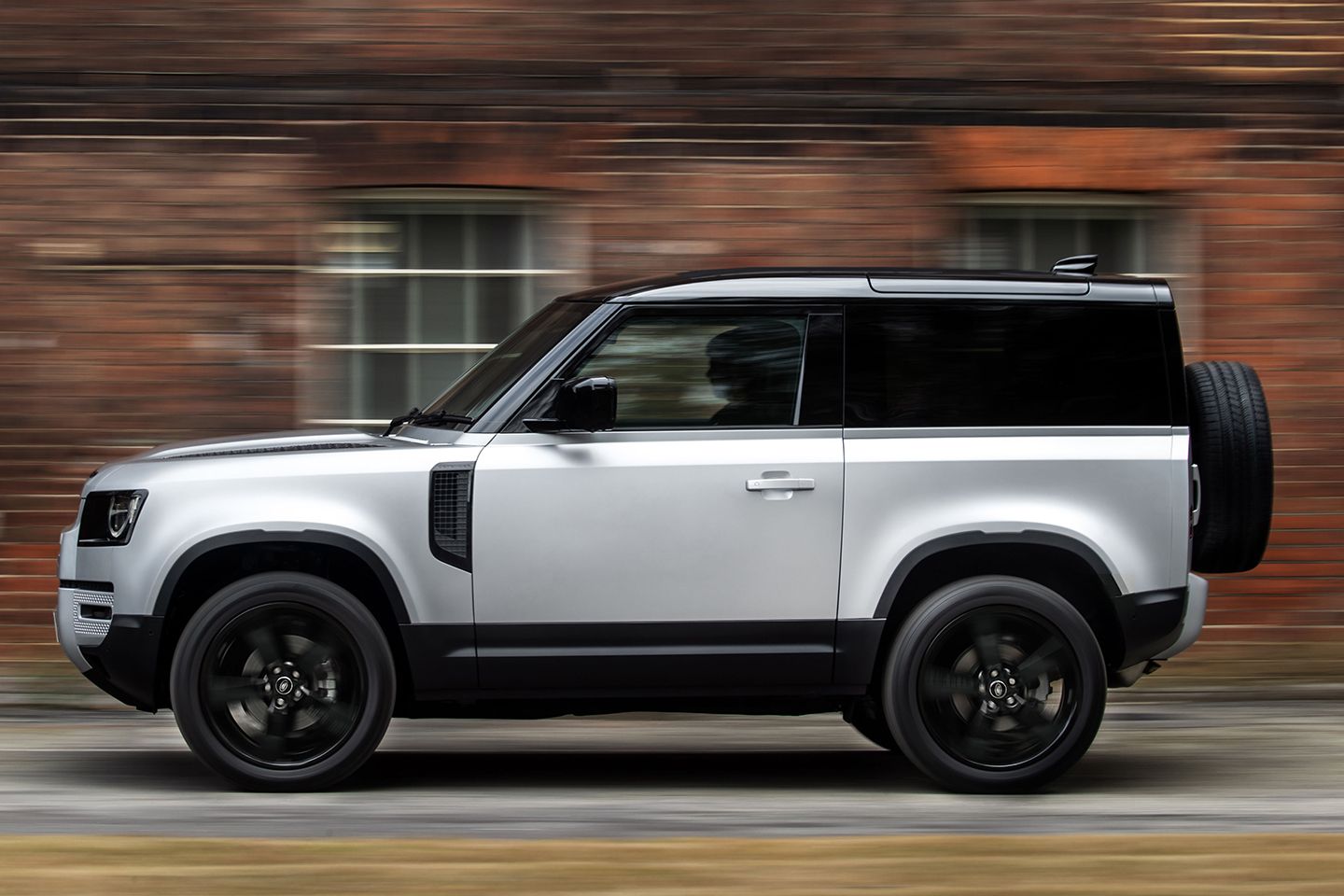
BODYWORK
If your daily driving involves the regular use of tight car parks you need to think carefully about Defender body sizes. With the spare wheel in place, the 130 is over 5.3 metres long. It doesn’t feel excessively large from behind the wheel though, and if you’re looking for consolation the Range Rover is even wider. It’s a thing to bear in mind though, as is the requirement to book a Defender into a more expensive ‘tall vehicle’ carriage on the Channel Tunnel train.
The 130’s load capacity ranged from 389 litres with all eight seats in play to an all-seats-down maximum of over 2,500 litres, which was a lot. The 90’s cargo space was severely compromised by back seat bases that didn’t fold up, which stopped the seat backs from folding flat. As a result the entire cargo platform with the seats down as far as they would go sloped at an impractically steep angle. LR put that right on 2024MY cars which have folding-forward seat bases and a raised boot floor. A bit mad that they didn’t have those to start with though. Grizzled LR types like to say that the company always releases new cars before they’re finished.
Sonically the optional fabric sunroof worked well open or closed. Generally speaking, wind and road noise were well controlled. There have been reports of windscreens cracking for no apparent reason, sometimes after a period of hearing strange crackly noises from the top corners of the glass. Warranty replacement screens cured that. Rear wiper/washer jets could clog up. Front light modules blew up.
The external trim piece on the A-pillar could either start fluttering at speed or fall off entirely. Door seals could squeak annoyingly. One owner said that the right rear door wasn’t closing properly and that there was a fault with the outside door handle.
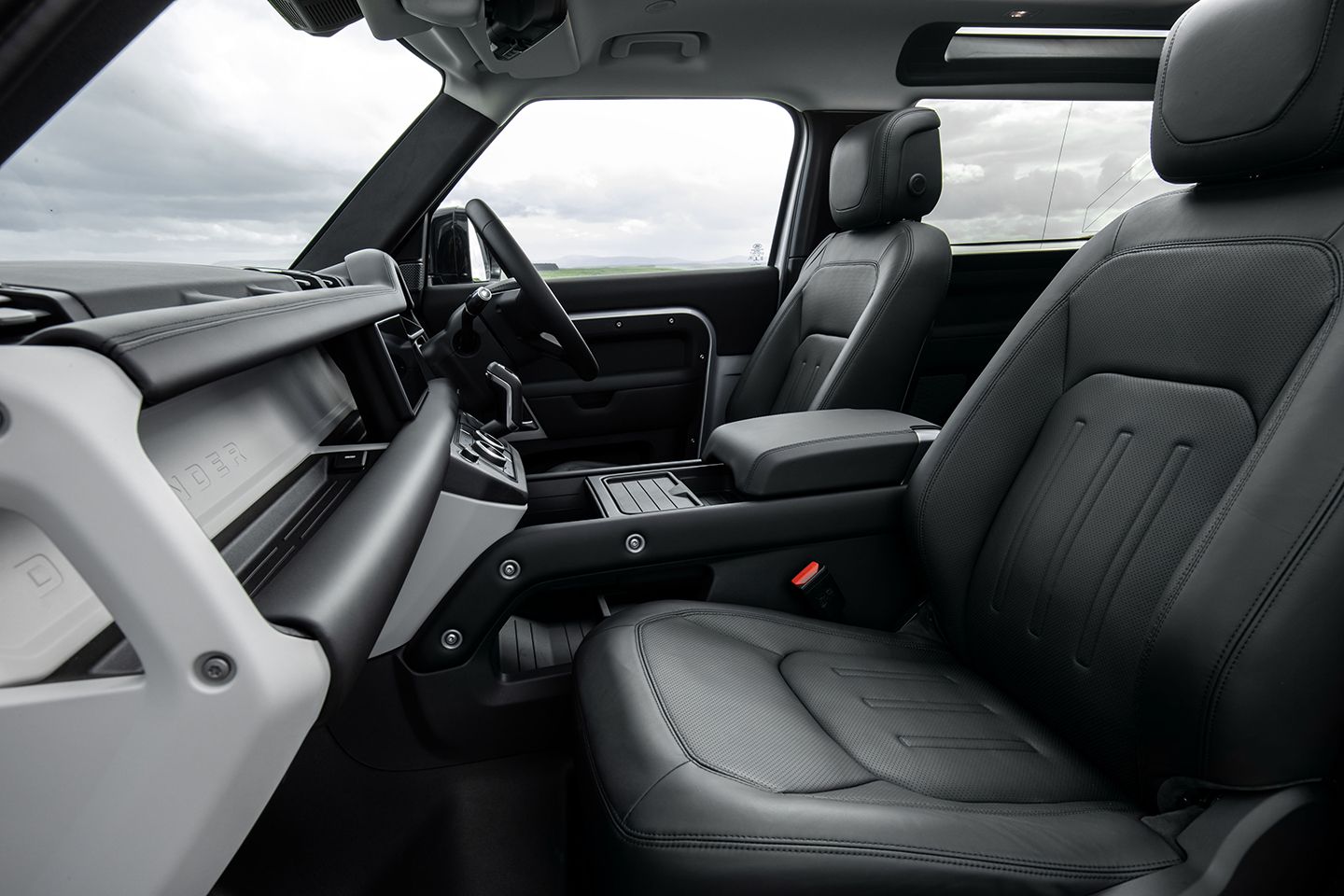
INTERIOR
With the L663, JLR became the first global car maker to use CloudCar’s latest cloud-based services platform. Scanning with smartphone QR codes displayed on Pivi Pro allowed Spotify, TuneIn and Deezer users to access and stream content even if their smartphone was at home. Updates were done cloudishly too, automatically keeping your Defender up to date even if you hadn’t bothered to do the same with your smartphone apps. Drivers and indeed passengers could navigate to, or dial in to, meetings and conference calls with one screen touch. The system would accept what3words inputs too.
It wasn’t just left like that either. Plenty of over-the-air updates were sent through to add extra value to the suite of stuff that was already on the Pivi Pro system, which effortlessly, seamlessly and simultaneously provided both Android Auto and Apple CarPlay content. Sadly the screens on early cars were not immune to blacking out, and not always in a way that you could fix by turning it off and then on again. Actual physical shorts were discovered, requiring actual spannering. Once done though, that was usually job jobbed.
Some owners had trouble with the ‘diamond’ button on the steering wheel which was effectively a ‘change source’ control for the audio, phone etc. If you were listening to the radio (say) and a phone call came in, the system would switch to the phone but then not switch back to audio afterwards. Or it would switch back to the radio if Spotify (for example) was manually selected on the screen but it wouldn’t go back the other way.
The interior was very comfortable, not just in the specifics of seat comfort but in terms of the amount and use of space. The cabin managed to be rubber-mat utilitarian and luxurious at the same time. You probably wouldn’t want to spend much time in the back of a 90 but there were no such complaints in the 130 or even the 110. Recalls were issued to replace seat rails that were causing a clicking noise when you moved around in the seat. In at least one case the rectification procedure revealed stripped/unfastened securing bolts.
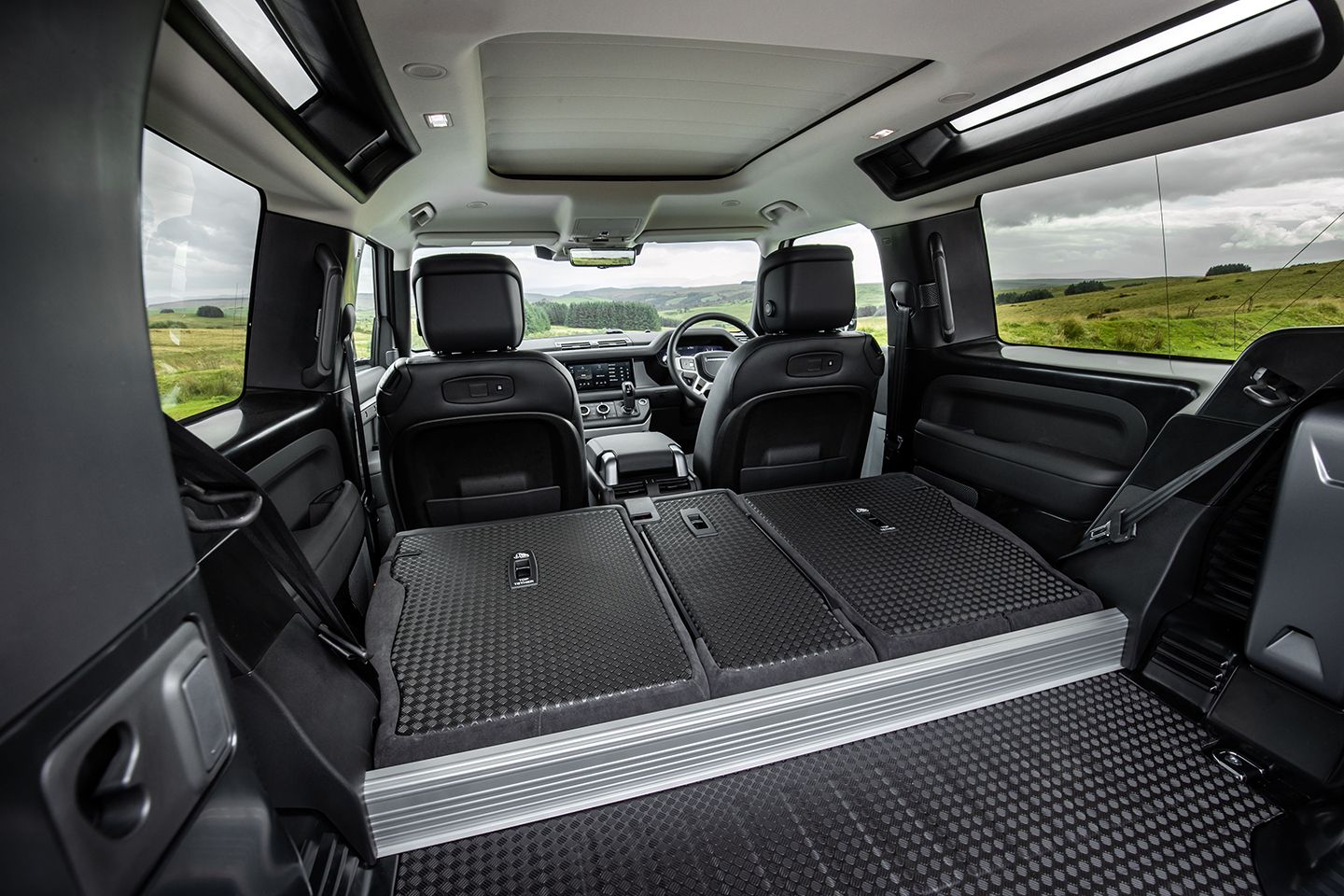
Before folding the rear seats forward you were supposed to remove the centre headrest, but it wasn’t immediately obvious how to do that so some owners didn’t bother. This inevitably led to rubbing and in the worst-case scenario tearing of the upholstery on the back of the headrest. One owner had to wait six months for a new headrest to arrive, with a promised bill of £400 to go with it, but in the end LR did it for free under warranty. Some complete seats have been replaced under warranty due to staining. Rear seats were often hard to slide back and forth, especially when the car was new. Regular use and/or silicon spray eased the action.
Some audio speakers rattled on heavy-bass tracks. Again, non-functioning securing bolts were found to be at fault, and again, once good bolts had been put in and done up the problem went away. Other audio issues like the sudden departure of the offside speaker from the sound stage (a known bug) were generally fixed by OTA updates. A Pivi Pro reset – holding the power button down for 15 seconds – was worth a try on stuff like this and the info screen blackouts but it didn’t always work.
Whereas the heating controls have now been buried into the screen hierarchy on models like the Range Rover, physical HVAC knobs and buttons have been retained in the Defender (even the new-for-’24 version), which will be good news for many. Overheating wireless charging pads were a thing at one point but it looks like that’s been sorted. Some sat navs didn’t display satellite maps in their entirety.
More than one owner has had both key fobs die on them. In one case this was traced back to a faulty five-amp fuse in the KVM (Keyless Vehicle Module) fuse panel.
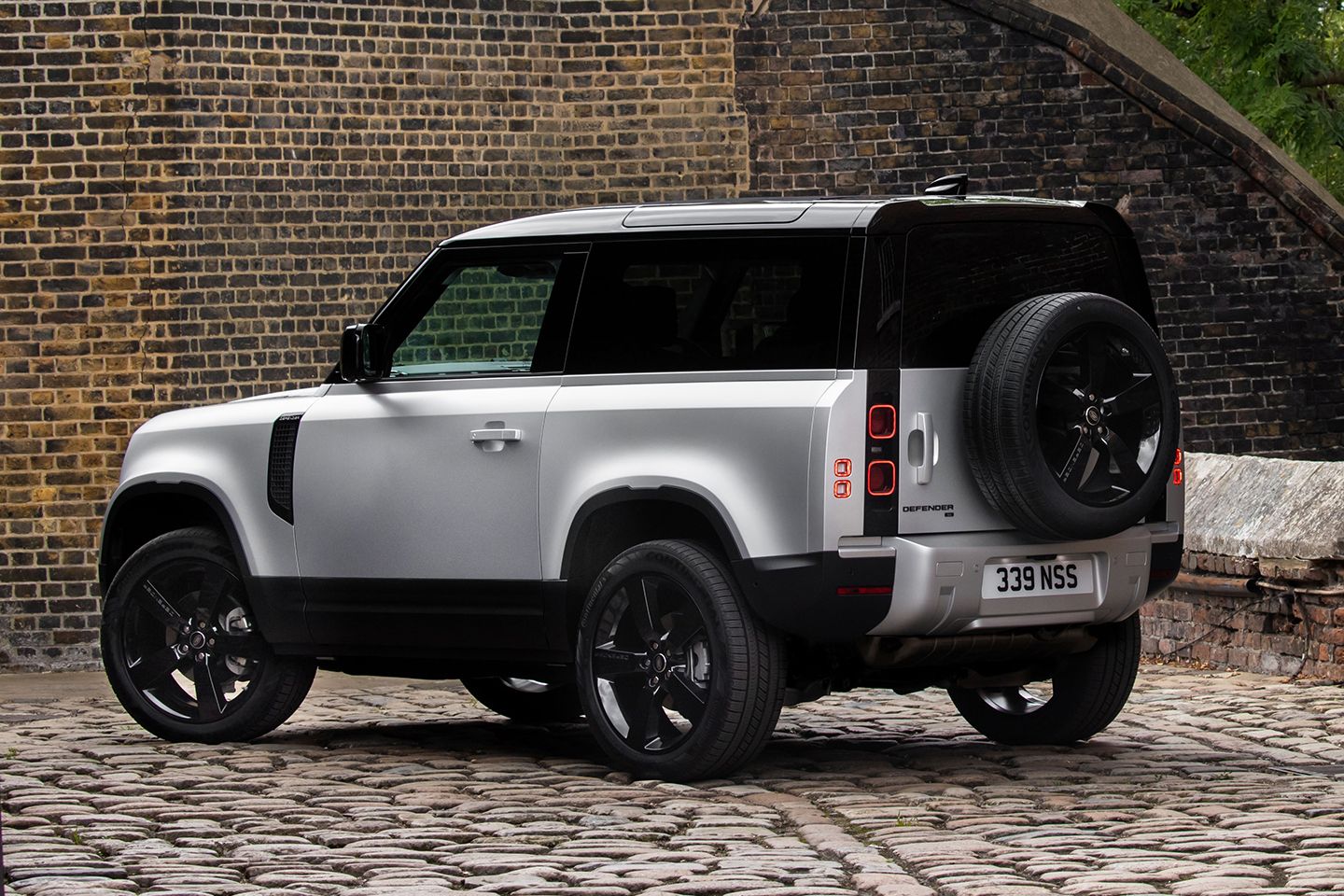
PH VERDICT
So, new Defender: hit or miss? The top-spec models weren’t cheap, the fuel economy wasn’t that great and the boot space in the 90 was a bit pants, but all that’s been true of Defenders past as well as present. As a result many if not most new Defender customers walking into LR showrooms were conveniently preconditioned to expect these foibles.
On the plus side, they’re wonderfully capable off-road, another Defender trope, but also super comfortable on the road, very much not an old Defender attribute. The cabin storage opportunities for bits and bobs were well thought out and copious. The four-cylinder diesels have had a rocky time but the six-cylinder units we’ve focused on here are by and large smooth and strong.
Some of the faults that came up on early cars especially went away when warranty replacement parts were fitted, suggesting teething troubles at the brand-new factory in Slovakia where not just new Defenders but also the full-size Discoveries were being built. Volkswagen, PSA and Kia were also building cars in Slovakia by the time LR arrived, giving rise to unlikely-sounding theories that the country (the world’s largest car producer per capita) might have run out of skilled workers by the time LR set up shop.
Whatever your view on that, and on the fact that Land Rover traditionally gets low ratings on customer satisfaction surveys such as J D Power, the impression we’ve gained from forums is that new Defender owners are in the main happy with their purchases, forgiving what faults there have been as minor and easily fixed. Several serial Land Rover owners on these forums have declared the new Defender to be the best Landie they’ve ever had. Many of the posters have said they’ve had no problems at all.

There again, if you go to one dedicated Defender site you’ll find over 30 pages worth of thread starters, all different. Not all of these are complaint threads. A fair few of them are, but most of the issues – and their fixes – are now known. Of course, we don’t know the experiences of non-posters but that applies to any car.
Our impression of the warranty resolution process is that it seems to have been decent enough, albeit not especially rapid. Not everyone has enjoyed the dealer relationship, although some dealers like Dick Lovett Bath in Melksham have been singled out for high praise.
All things being equal and you’ve decided you’re going to go for it, the most affordable VAT-included D250/D300 Defender on the PH classifieds at the time of writing was this 61,000-mile 2021 110 D250 SE at £44,995 while this 14,000-mile 90 D250 commercial was £47k on the nose.
The cheapest D300 was this pano-roofed 110 from 2020 with 68,000 on the clock, going for £49,000. There are plenty of D250s and 300s priced between £50k and £60k. At the other end of the price spectrum, you’ll need £100k or thereabouts for something like this ’24 D300 110 with £25k worth of extras including 22-inch wheels and peasant-blinding roof lights or this 75th Limited Edition with its carbon fibre bonnet and unique appearance.
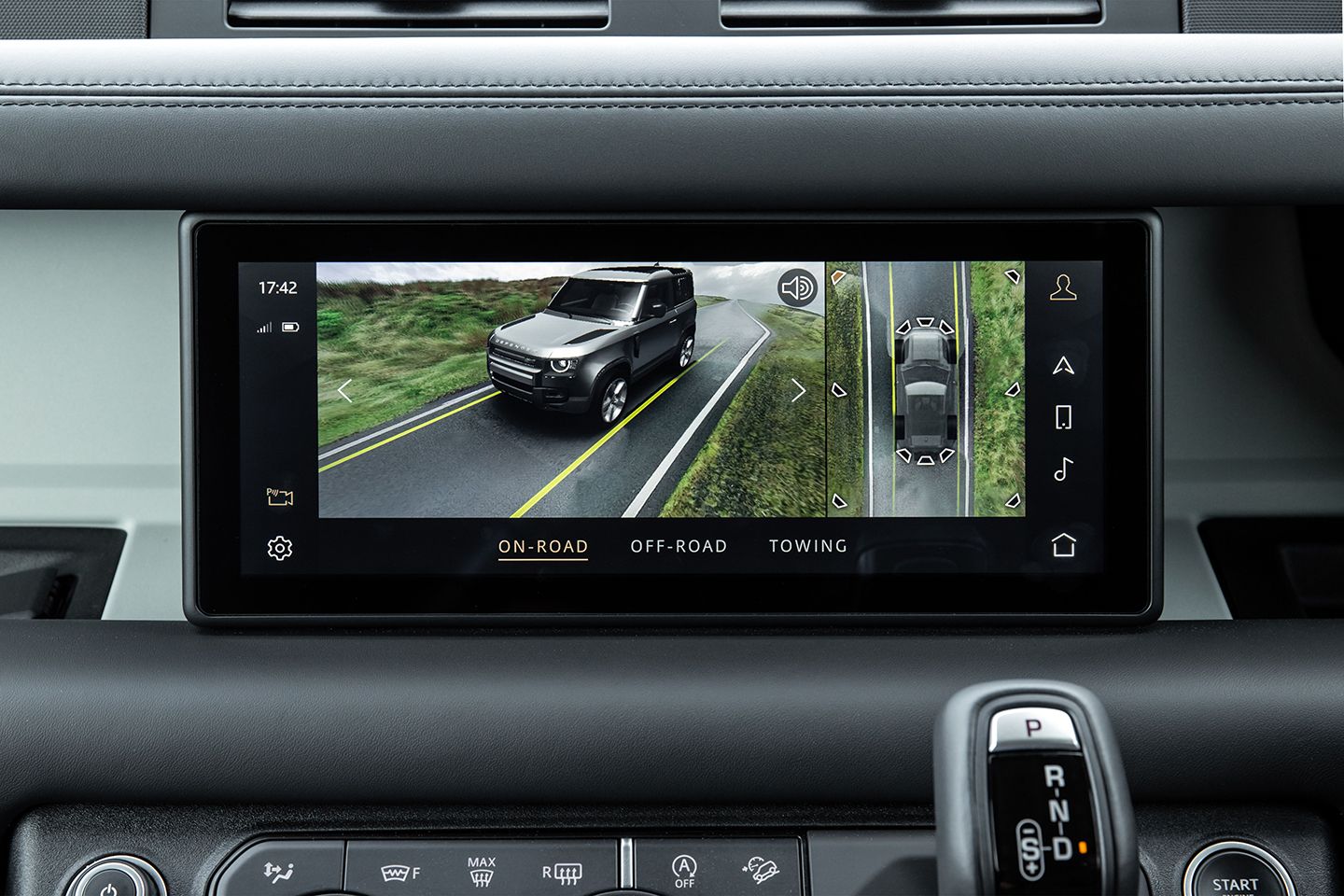
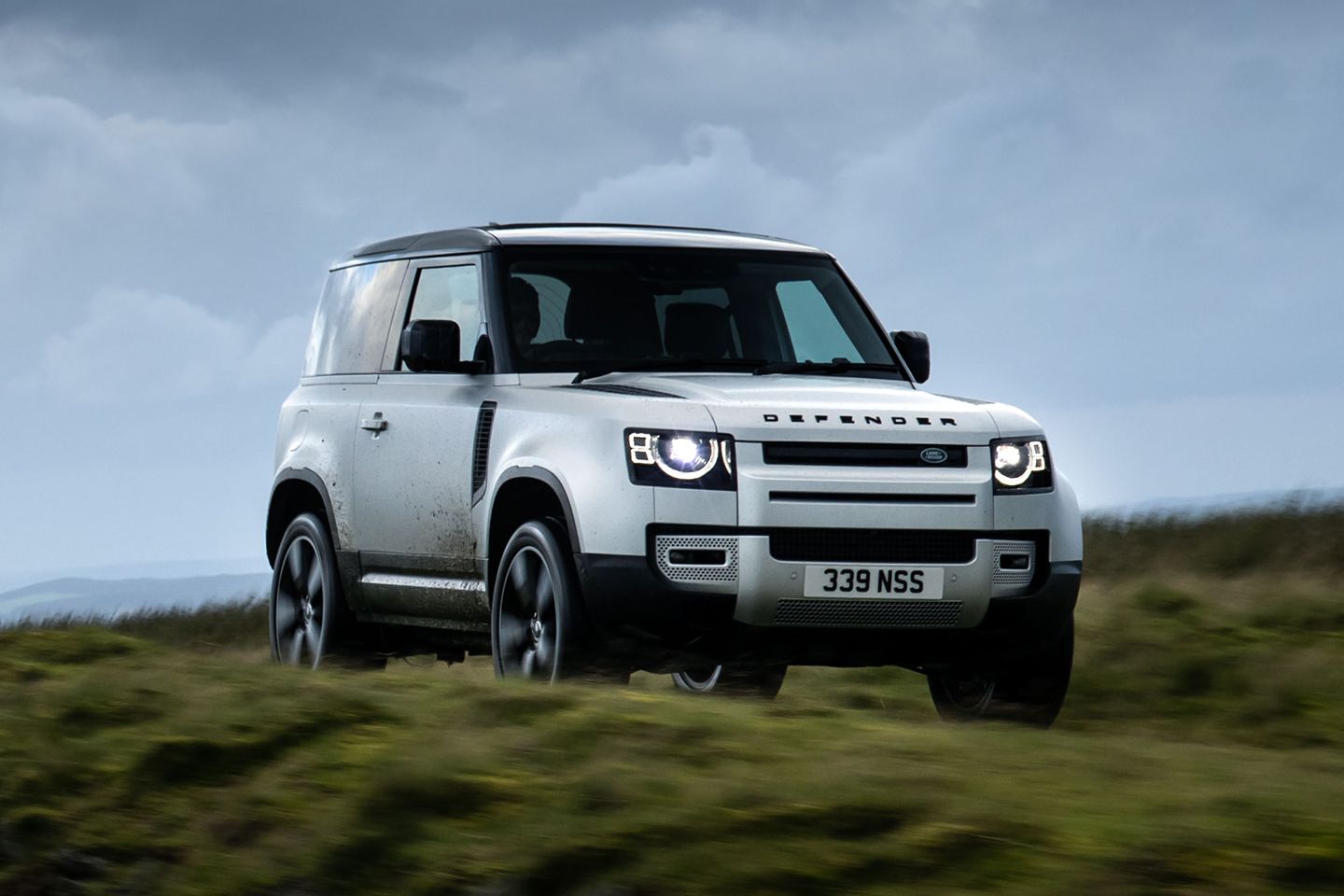
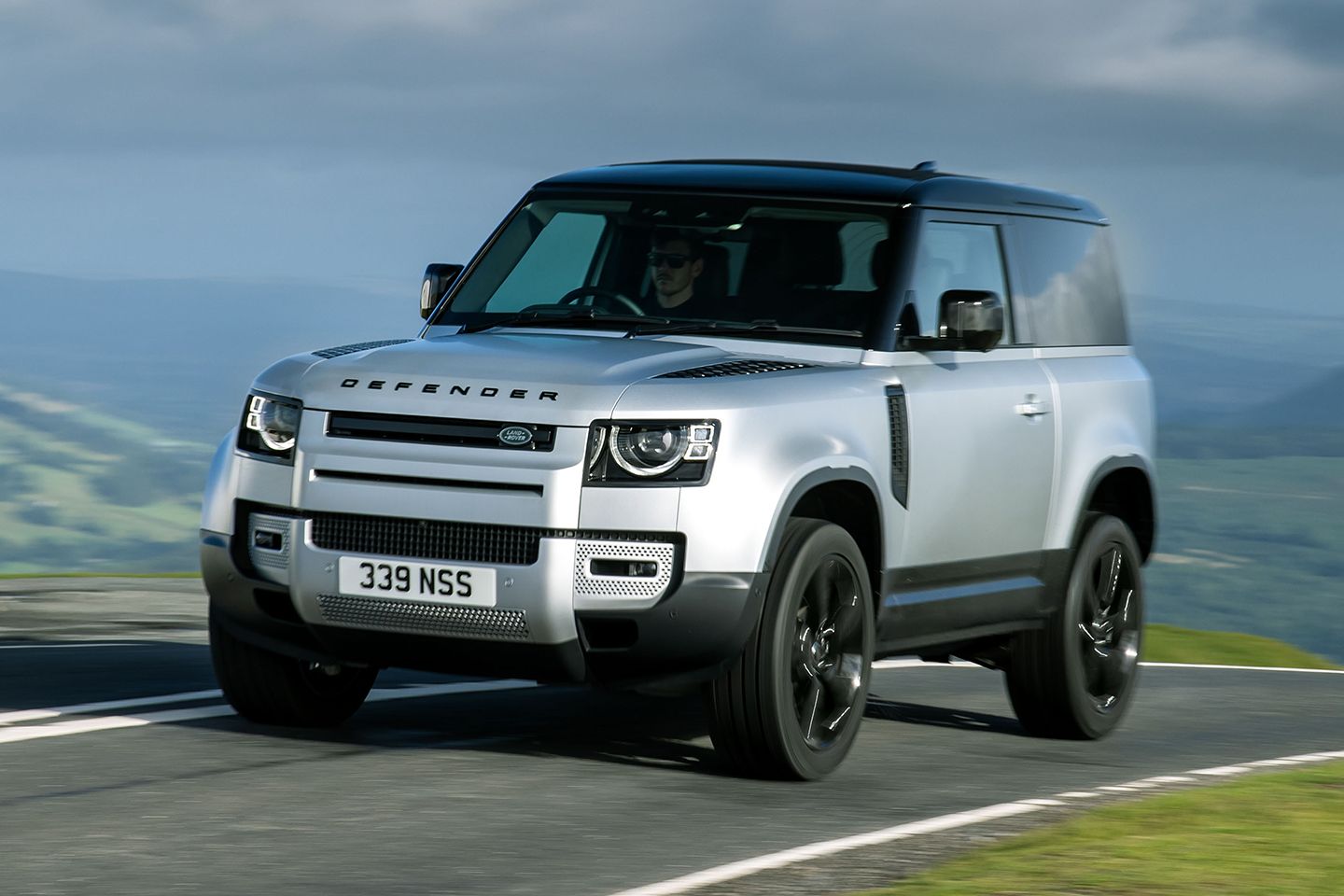


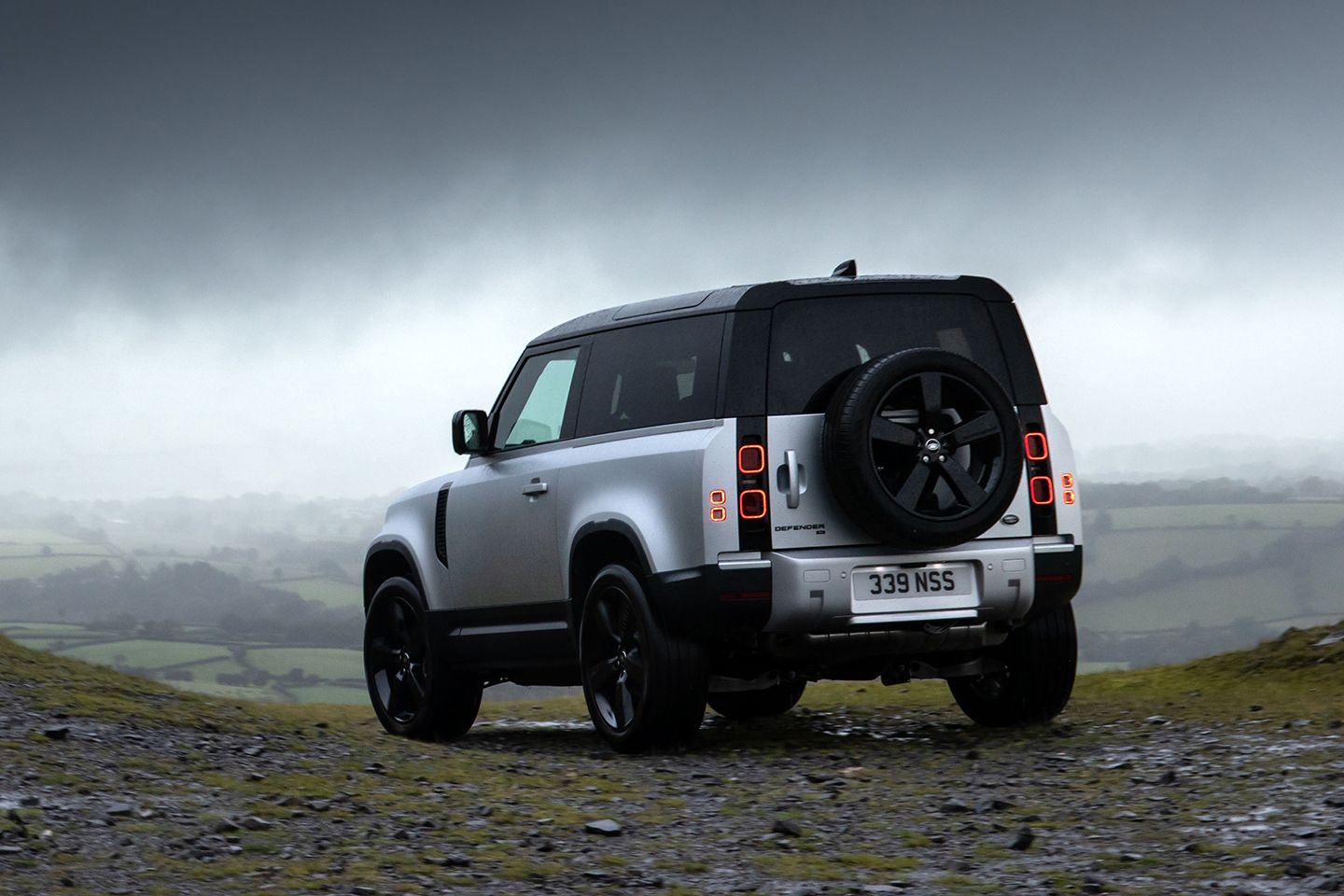
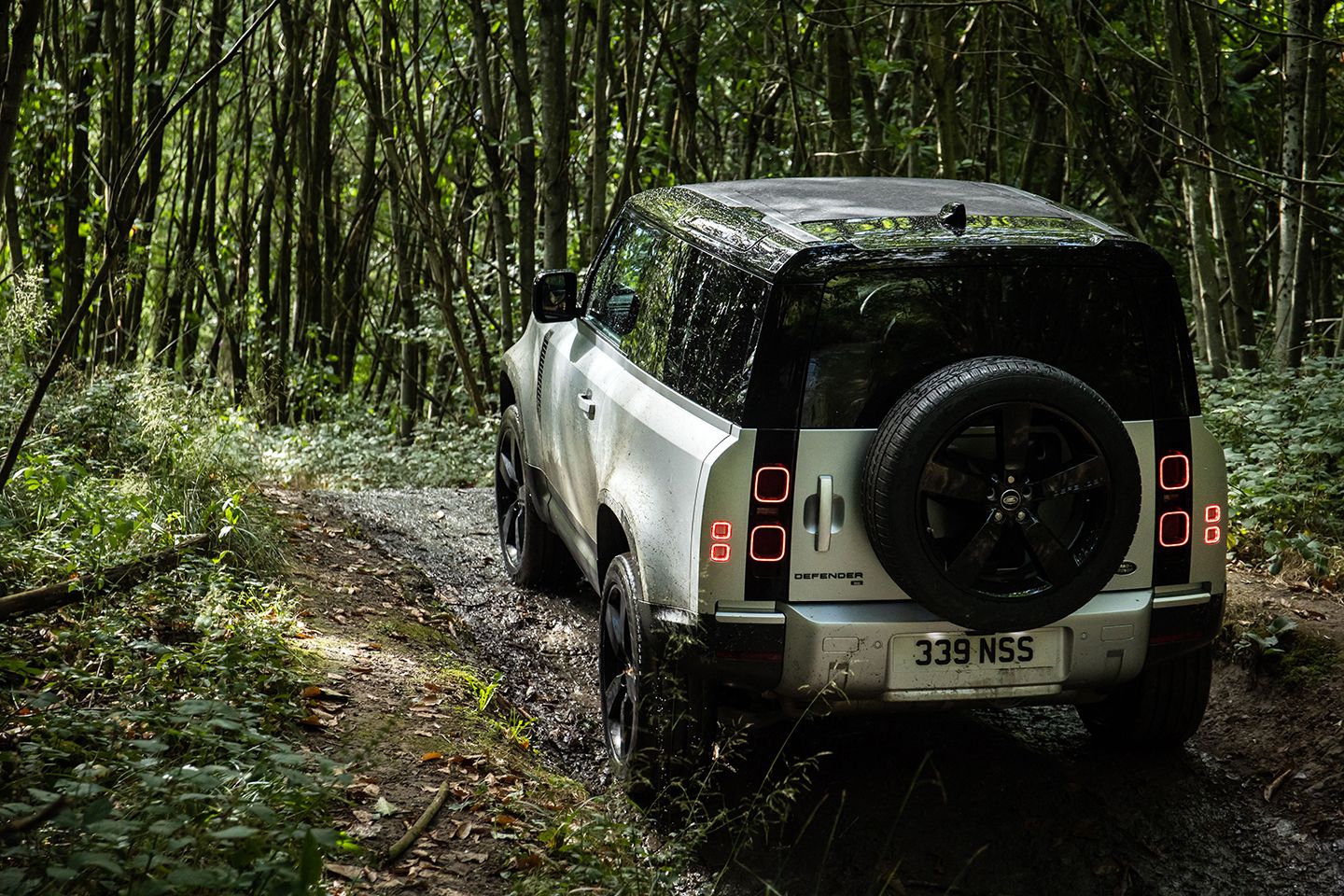
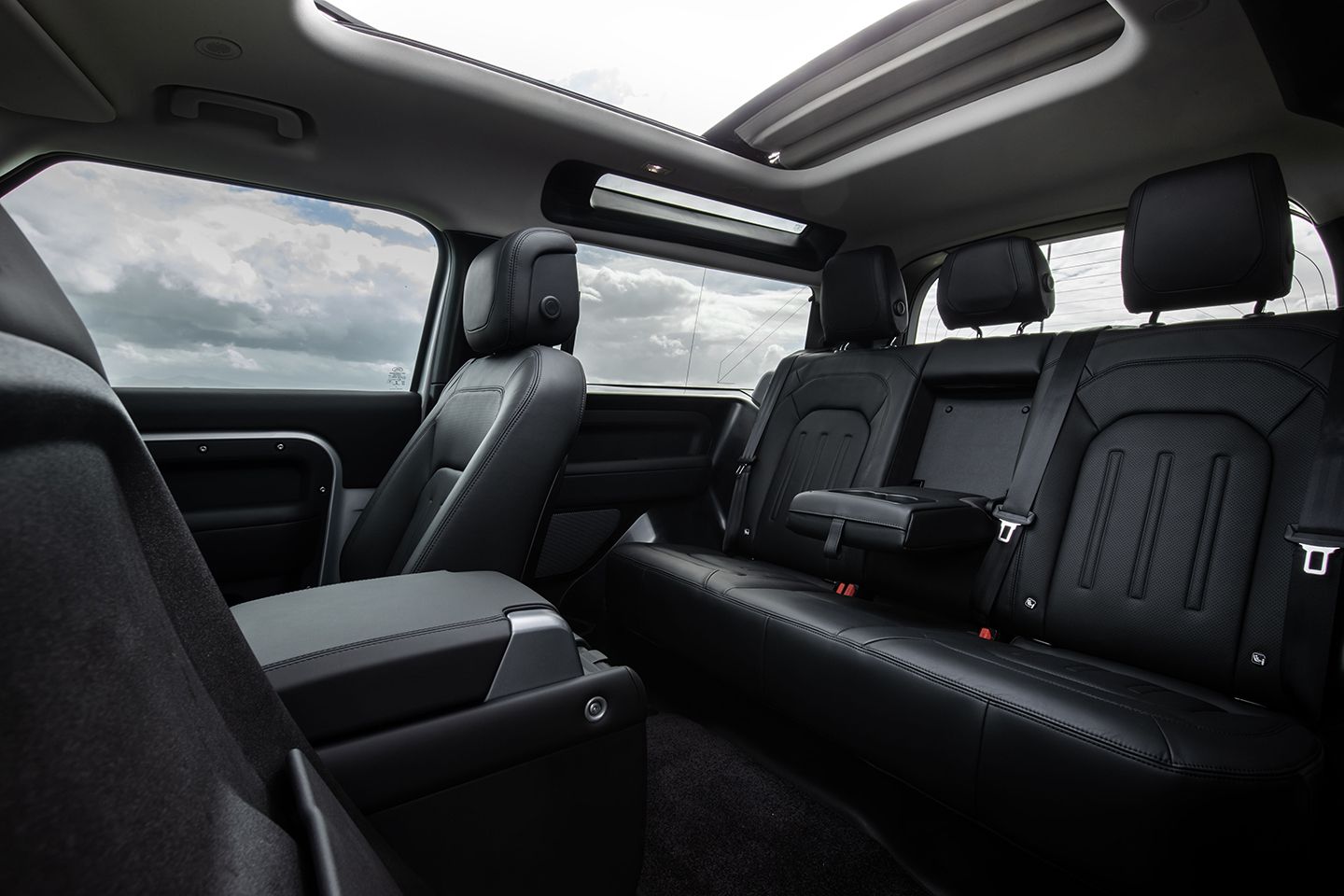
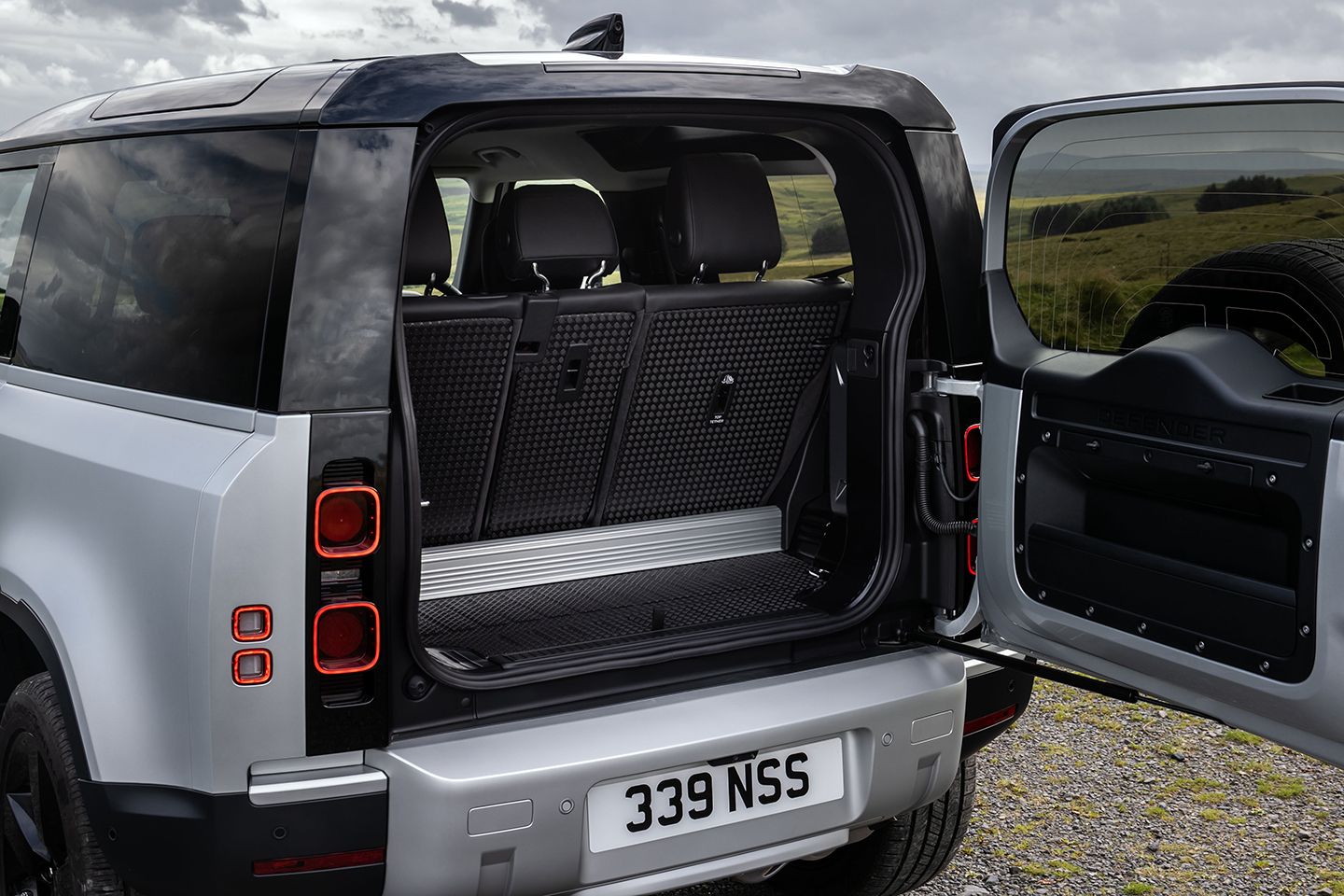
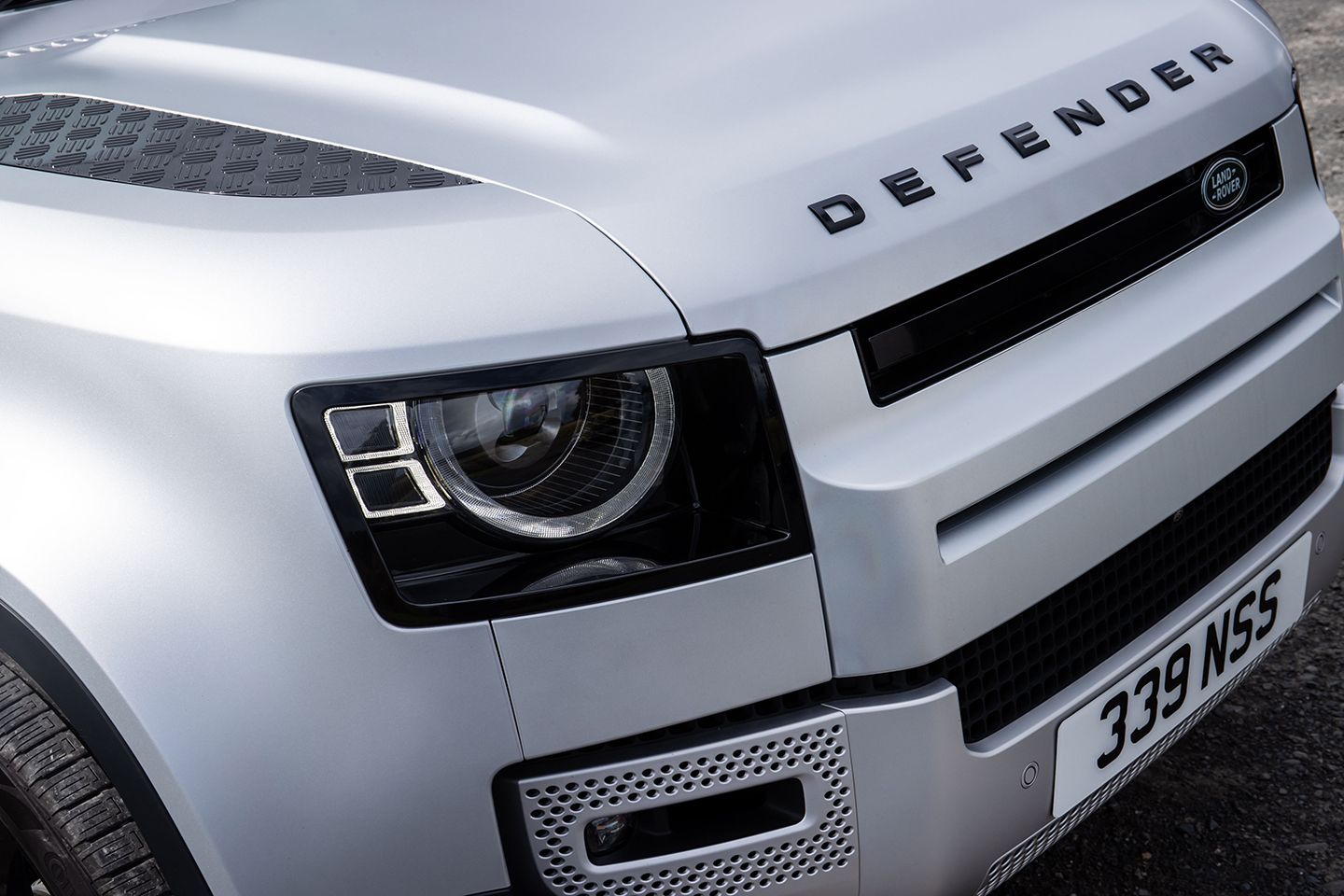
In terms of the rest of the vehicle, I quite like ours but it defaulting to having various speed warning/driver assistance features active each time you start the vehicle is annoying.
He used to say..."if you think you're stronger than a car...then crack on".
He used to say..."if you think you're stronger than a car...then crack on".
It would be incredibly arrogant for a motorist to consider that on the road said motorist should not drive without due care. In fact the recent change in the Highway code redresses the balance to some extent.
He used to say..."if you think you're stronger than a car...then crack on".
We should drive in a manner that we will not course harm should something unexpected happen.
He is not the troll here.
Gassing Station | General Gassing | Top of Page | What's New | My Stuff

